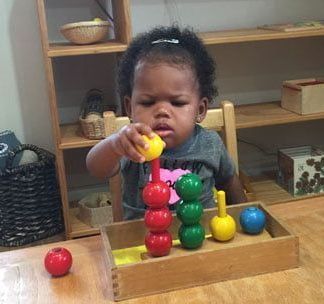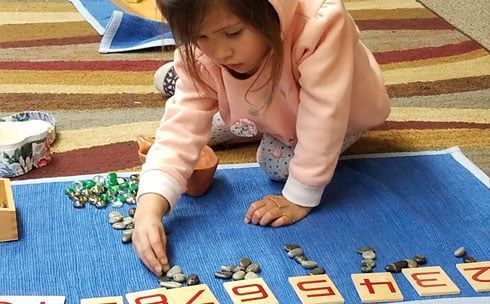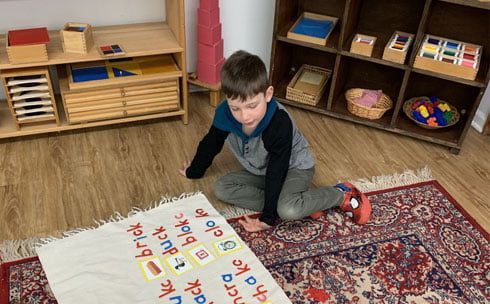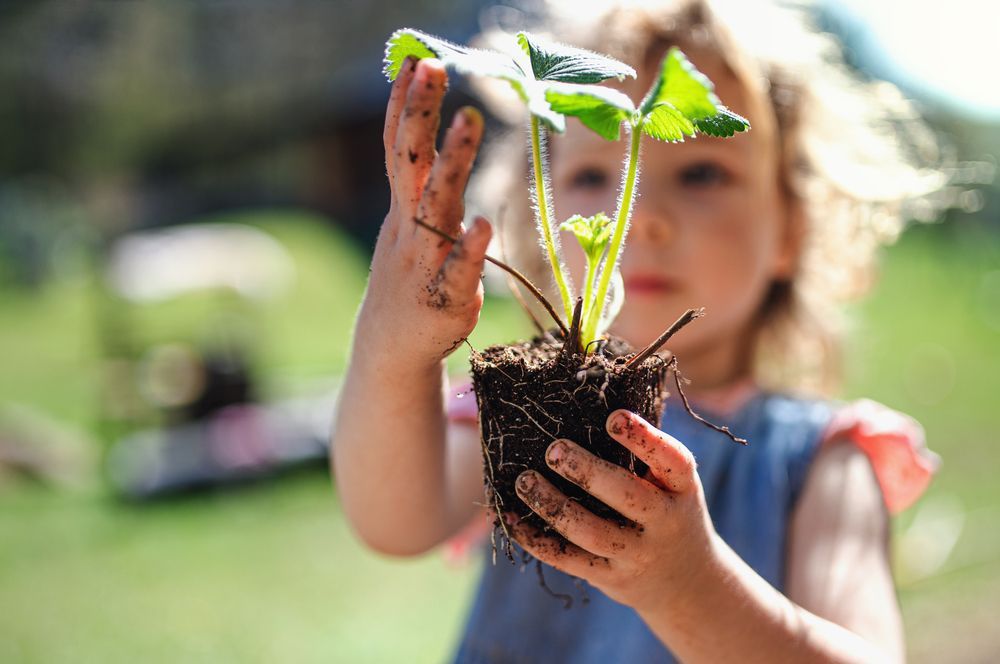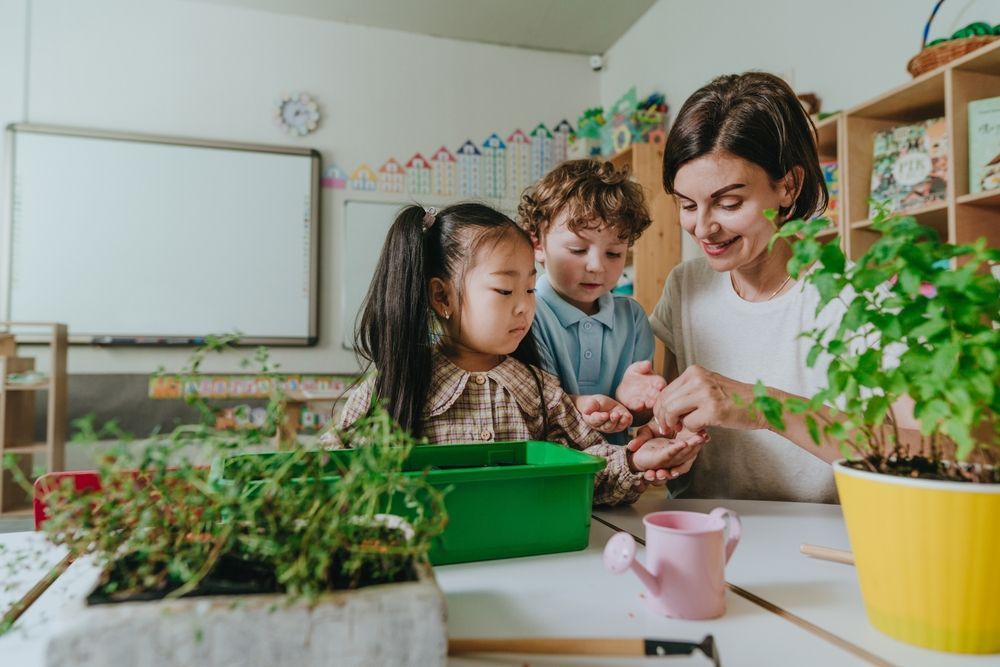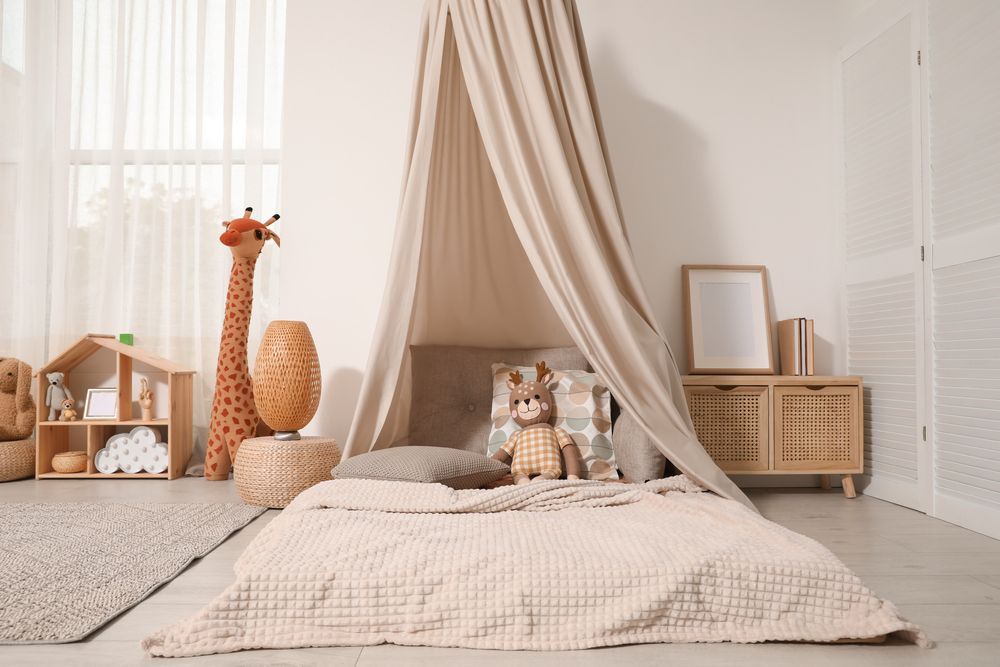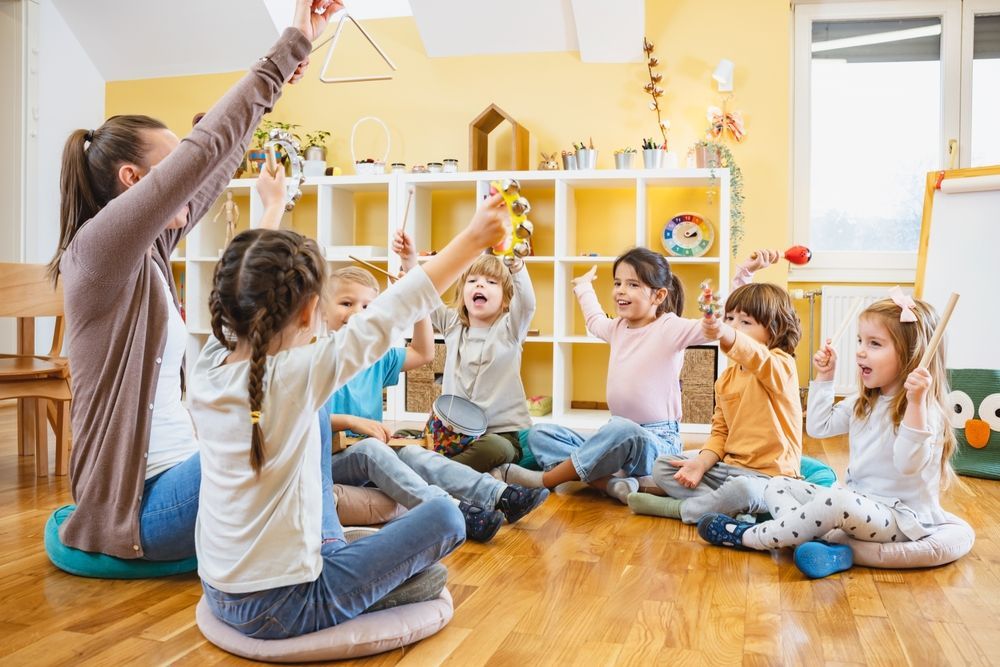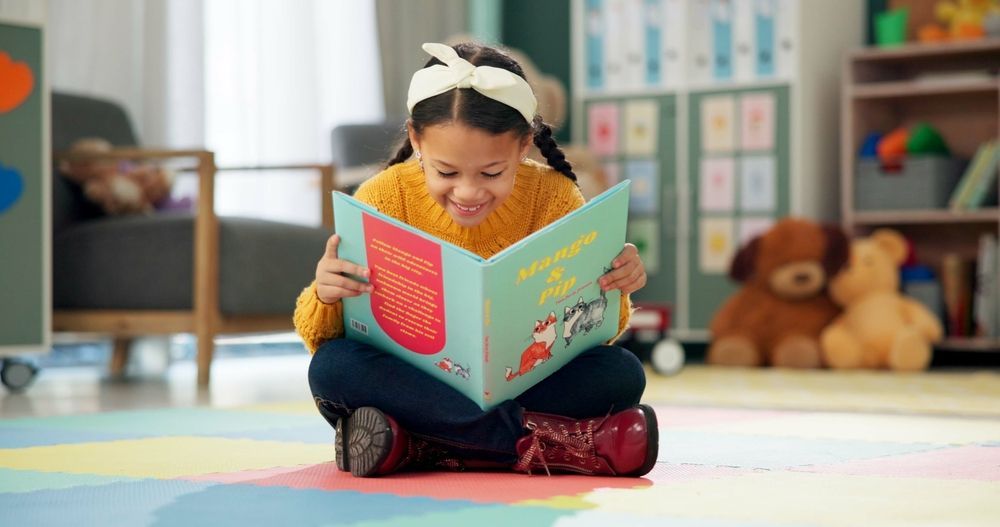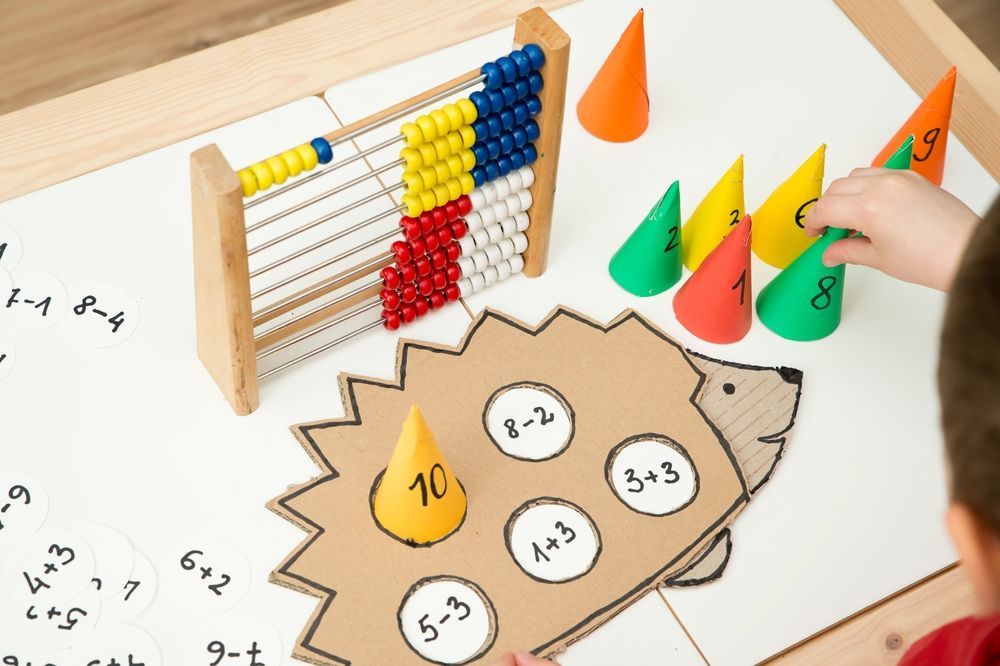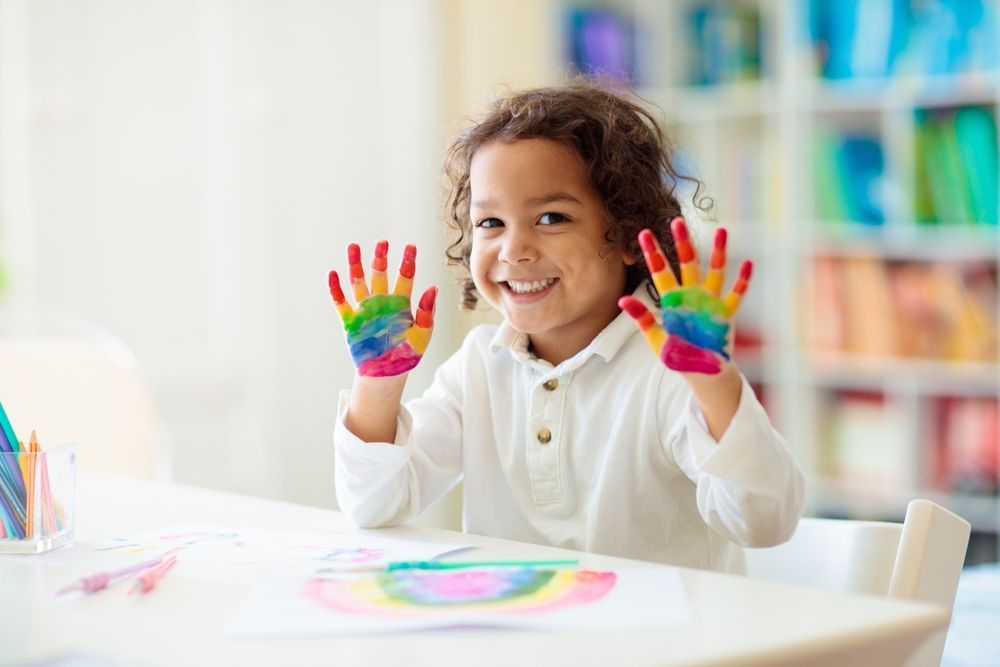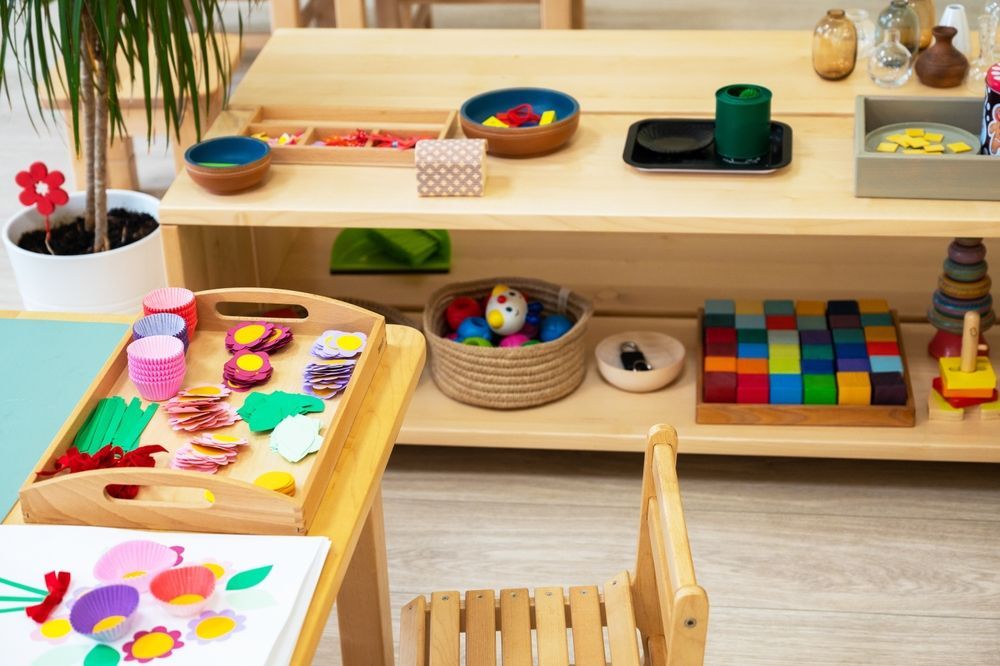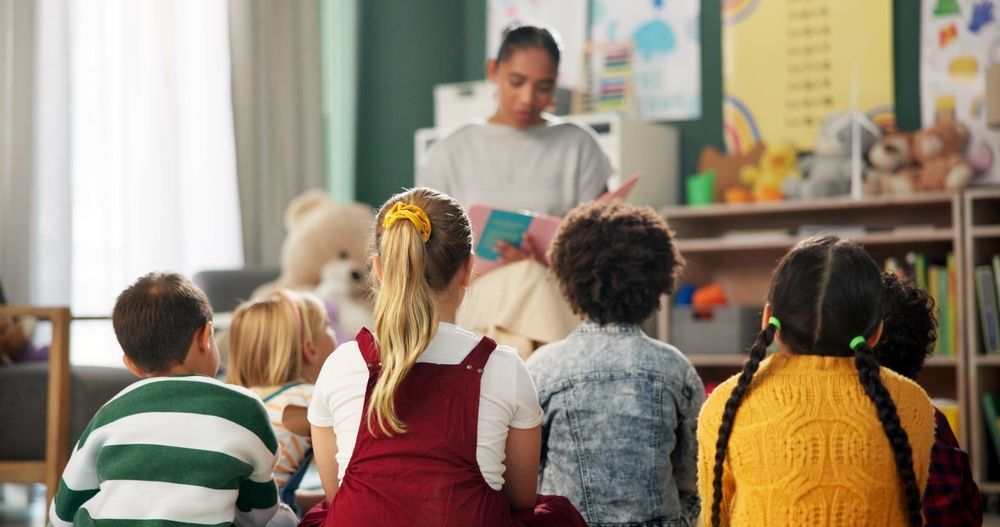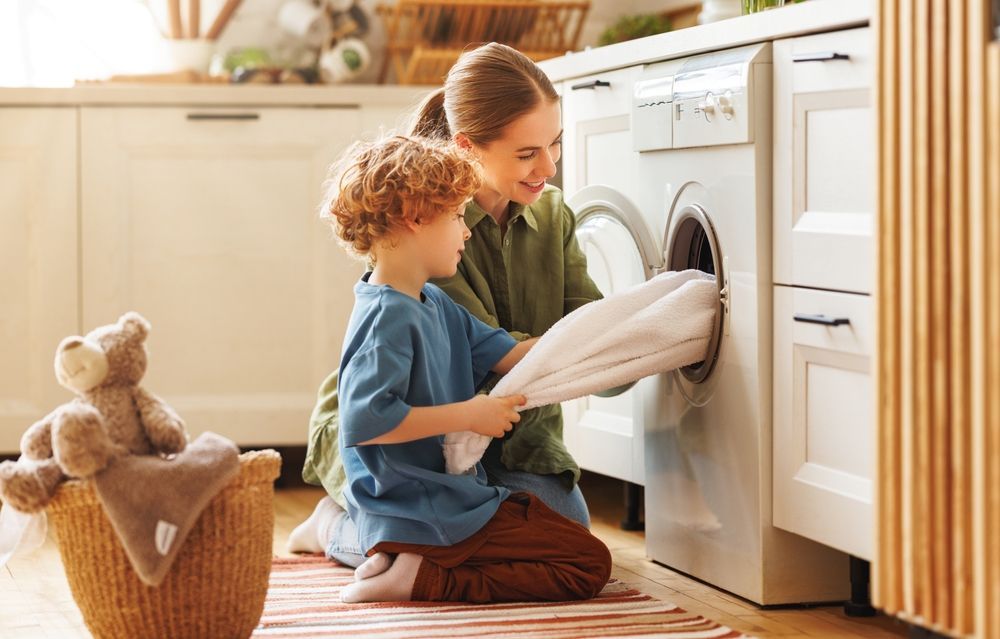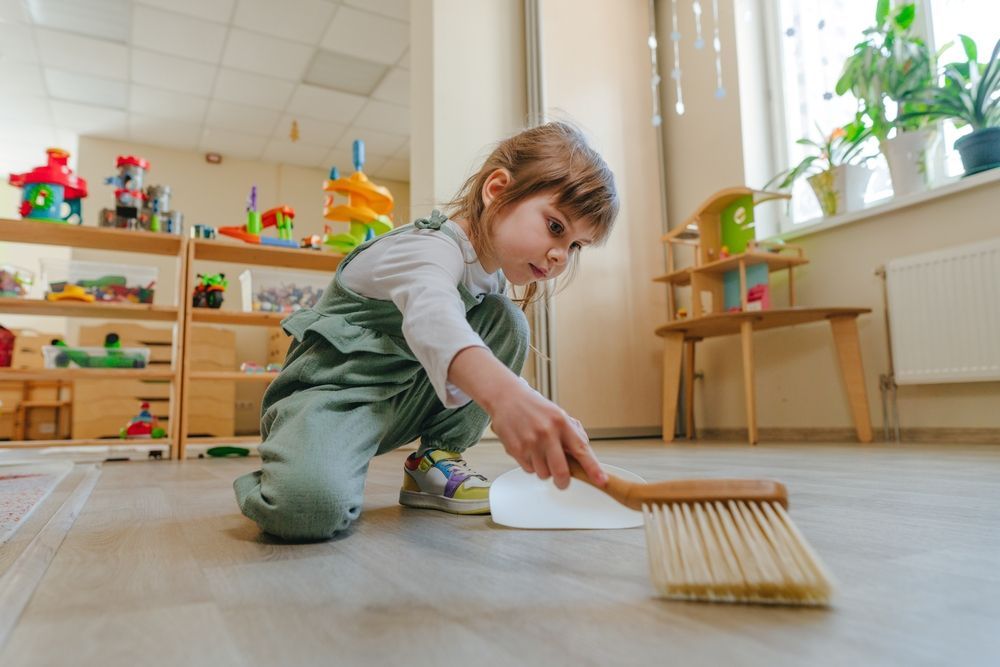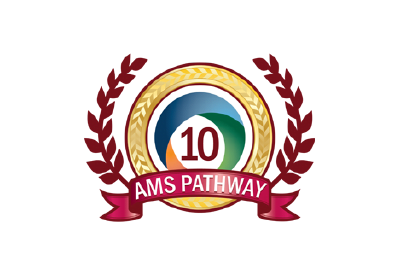Written by: Mansio Montessori
Gardening is an ideal way for preschool children to develop skills, experience nature, and have fun. The benefits of gardening for kids and parents include positive physical, mental, and emotional effects. From increased motor coordination to science learning to character development, much is acquired by creating and maintaining a garden. Spending some quality time with children in a garden is a unique parenting opportunity in a very special learning environment.
But what age is appropriate for your child’s introduction to gardening? How can planting and tending flowers and vegetables in a garden help parents teach preschoolers and prepare them for school? Why is engagement in gardening important for small children and parents? How much space do you need for gardening with children?
Let’s look at some fun and educational ideas for helping kids and parents grow through gardening and have fun in the process:
What Age Can Children Start Gardening?
Toddlers often like nothing more than playing purposefully in the dirt. What’s not to love? They can spend time on a nice day out in the yard with Mom and Dad. They can enjoy pulling up little weeds, digging in the earth, placing seeds in the ground, pouring water on them, covering them up with more dirt, and handling child-sized garden tools.
These are all fun activities for toddlers, and they double as excellent learning opportunities. Children begin to observe the workings of nature close-up and gain an early comprehension of what it means to care for their environment. They develop patience and learn both independence and teamwork through gardening with their parents.
For successful fun learning activities in gardening for kids:
- Use gardening tools designed for children.
- Choose small, brief, relatively simple projects.
- Choose seeds for plants that will need minimal maintenance.
- Engage your child(ren) at each step.
- Foster sensory and cognitive development opportunities in gardening.
- Set up and follow a routine for garden care with your child as the plants grow.
How Gardening Can Benefit Preschoolers
The little individual activities involved in gardening add up to make it a uniquely ideal project for a small child and parent to complete together. The time the family spends in a garden is of the highest quality. Then, the wonder of seeing plants grow over time can inspire many more moments of deeper appreciation for nature as well as a personal and family team achievement.
Being outside with their hands in the soil cultivates so much more than garden plants:
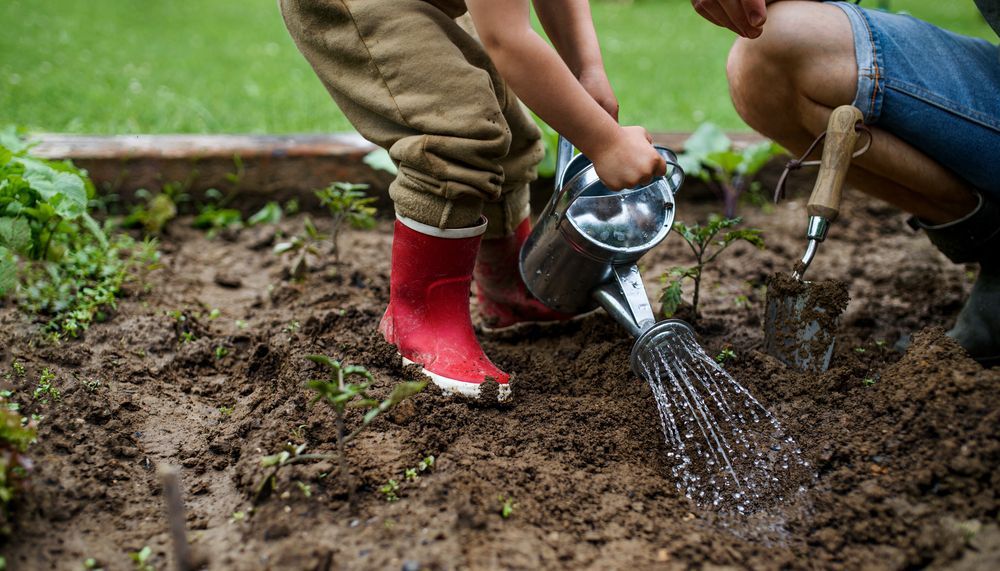
- Gardening promotes a broader view of the world and the individual and a higher level of appreciation for nature and everything in the environment and society.
- Children’s character develops through the kinds of learning that naturally occur in gardening. Kids learn patience from tending to garden plants and watching them grow.
- Watering their garden, pulling weeds, and snipping dead sprouts from plants all help kids develop a healthy sense of responsibility. As they watch their plants grow, their success helps build self-confidence and self-esteem.
- Participating in gardening tasks together helps grow a stronger family connection and mutual respect. It affords small children a sense of being a part of a team working toward a shared goal.
- Composting organic scraps for fertilizer can help kids begin to understand the planet. Research indicates that handling soil while digging in it or planting seeds can improve children’s moods and reduce anxiety.
- Learning about plants, soil, and the sun can naturally lead to an interest in other features of the garden, like insects, animals, soil, seasons, and the dynamics of these.
- Kids learn habits of eating natural foods as they grow them. You and your child can grow high-vitamin foods, like spinach and other leafy greens that promote healthy brain development.
- Time spent gardening features many educational delights for toddlers, like discovering birds, turtles, frogs, butterflies, snails, worms, rabbits, and others sharing the space.
Helps Learn New Math & Science Skills
Doing fun tasks in a garden is a natural way to learn many preschool-level math and science skills. There are great opportunities to build early math skills through practical application. For example, allocating seeds for holes dug, proportioning space between plantings, choosing amounts of water, measuring growth, comparing progress rates of plants, etc.
Gardening is also a big science project in learning about the fundamentals of how plants grow, the populations of creatures dwelling in and on the soil and vegetation, climate effects, etc.
Gardening with preschoolers can inspire children to explore the next questions about biology and botany, like how the sun makes plants grow, how plants absorb water, what roles the insects play in the system, and so on. The preliminary education in plant growth motivates children to seek the next level of learning on the most closely related science topics.
To boost the learning process, consider coupling your gardening activities with books and other materials on plants, or visiting your local arboretum or gardening nursery.
It Gets Your Kids Outside
Of course, parents these days worry about their kids getting enough physical activity and time outdoors away from electronic screens. Many parents want more outdoor physical activity for themselves as well. Gardening with kids has it all. It’s fun in the sun for the whole family, a wonderful learning experience, and a purposeful group activity that keeps on giving through the future.
The tasks of carrying the weight of a watering can, raking leaves, digging in the dirt, and planting seeds all promote healthy muscle and bone growth, and the development of fine motor skills. Children further gain early mental and emotional health advantages from the wholesome activity of working in the garden, including developing early habits of calm self-management.
Grows Sensory & Spatial Awareness
Preschool children benefit from activities that increase those critical aspects of consciousness. Gardening is an exploration of nature that offers a growing child many spectacular sensory experiences that they cannot acquire any other way.
Sensory Awareness: Children can freely plunge their fingers and hands into the fresh dirt. They can see all the varieties of little wriggling creatures that inhabit the soil and leaves of vegetation. They can smell the grass, flowers, and weeds surrounding them. They can listen to the birds singing on a spring day. The vivid sensations of all those textures, colors, sounds, and smells are precious, and they are particular to gardening.
Spatial Skills: As kids encounter the exciting sensory stimulants inherent in gardening, they’re also developing their spatial abilities. They’re handling tiny seeds, creating holes sized for inserting those, applying water in amounts proportional to the hole, and spacing holes at distances that allow plant growth. With help from their parents who are partnering with them in the endeavor, they can start to relate the sizes of trees to the seeds from which they started — a profound moment.
Encourages Creativity

Whether you have a big ideally flat space with rich soil for installing a huge vegetable garden or live in a high-rise and have a couple of small plant pots in a window, you can be inspired. That means you can inspire your kids to love growing plants too. If you’re an urban resident, the concept of
gardening with preschoolers
can be expanded to include other activities that best fit your lifestyle and area resources. For example, enjoy more time with your kids in local parks. Take day trips to larger outdoor spaces on weekends.
Whatever your living environment, provide opportunities for children to get their hands dirty planting seeds and enjoy the process of tending them. Experiencing success in growing a plant is exhilarating and highly creatively inspiring.
You may decide to combine the gardening activity with a decorating project to create a motif around the window plants or add pretty stones to your backyard garden. Or, you might like one of the creative gardening projects suggested below.
Provides Holistic Development Opportunities
Humans need time outdoors, including a healthy amount of sun exposure, fresh air, and physical activity. Spending time regularly working in a garden is an especially well-rounded activity for early child development. Routinely engaging in such healthy physical activity as growing your own vegetables encourages healthier nutritional habits.
Planting, growing, and harvesting your own melons, berries, and vegetables is an exceptionally satisfying physical endeavor. It further develops a deeper comprehension and appreciation of nature and a more defined sense of self-respect and personal ability. While you and your children are nurturing the plants in your garden, nature is, reciprocally, nurturing your family’s physical and mental well-being through its mutual engagement.
Flower Gardening for Preschoolers
With just a few packets of flower seeds, you can create a garden with your preschooler. Or, you can buy a few seedlings for replanting. Designate a little space somewhere along a walkway or near a building exterior, in an existing flower bed. Or, add some plant pots to your deck or window ledge.
Buy a bag of nutrient-enriched potting soil, if needed, and help your child with reminders for watering over the weeks after planting. Consider fertilizer tablets if needed, and make sure your plants receive the proper amount of direct or filtered sunlight, according to the instructions provided.
Vegetable Gardening for Preschoolers
If your project goal is to dabble in gardening to give your preschooler a memorable childhood experience of playing in the dirt and the thrill of growing something, that’s a meaningful pursuit. You may be well enough served by a few porch pots in that case. If you have in mind to grow some food to consume as well, then designate a square area big enough for the volume of vegetables you have in mind.
In either scenario, the point is to share a fun gardening endeavor with your kid(s) and encourage the learning that comes with it. Talk with your child about the activities you’re involved in together and express your thoughts about the outcomes.
Fun Gardening Activities for Preschoolers
Some of the most fun and effective recreational learning activities for preschool children are easily incorporated with gardening. Encourage your child to imagine some ways to create a fun garden theme. Use some stones, figurines, and/or old durable toys to compose a charming little scene in the garden.
Create a Fairy Garden
For a more elaborate children’s garden theme, you and your preschooler may decide to create a fantastical little world in a fairy garden. Pick a location in the yard or in your home, imagine a theme, and create a plan. Draw a little schematic to make sure you and your child understand each other’s ideas. Agree on a vision for the finished space. Select some seedlings from your existing garden and/or your local garden shop, and get a bag of potting soil. Gather some accessories that fit the theme. Check your child’s old toys and local dollar store trinkets for some great options to place in the magical garden.
Make Planters From Household Items
Many things around the house that are waterproof and sturdy enough to hold a bit of soil and water can be repurposed as planters. For example, old roasting pans, kettles, pasta pots, frying pans, mixing bowls, pitchers, baking dishes, serving platters, and other kitchen-sourced items can be used. Old plastic file crates can be decorated with craft paints and used for planting. Even a straw laundry basket lined with a few layers of heavy plastic (such as a shower curtain liner) can become a unique and beautiful planter.
Using metal pots, you may opt to drill a few small holes in the bottom for drainage. Or, with glass, metal, or other planter types, be sure to add a few inches of pebbles in the bottom before putting the soil in, to facilitate moisture distribution. Use Spanish moss, coconut fiber, hay, or pebbles to adorn the soil surface if you wish.
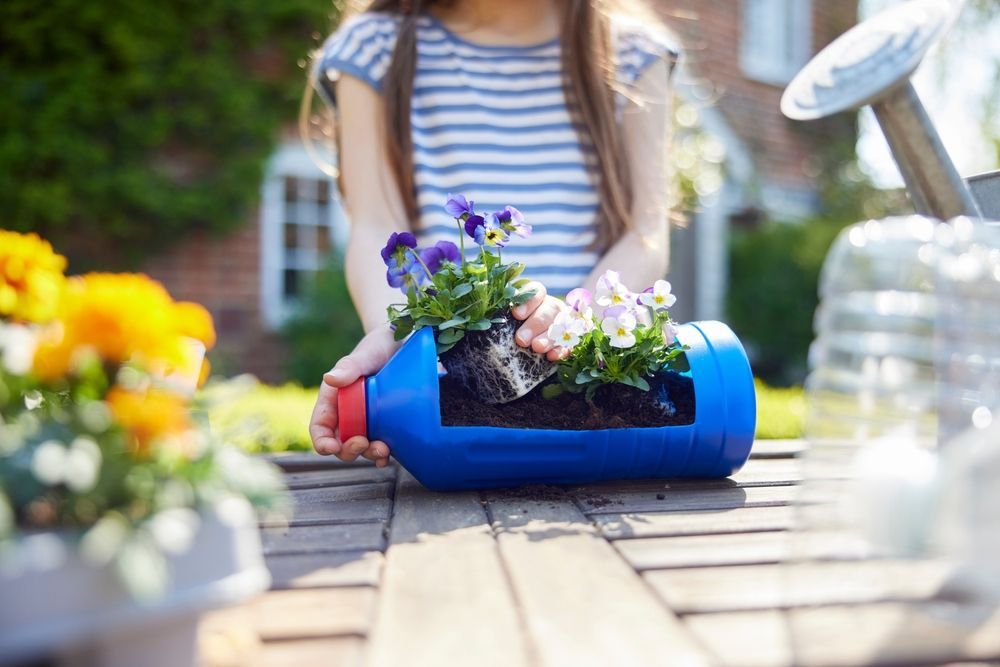
Include Bug Houses
Partner with your child in collecting twigs, dry leaves, pine cones, small pieces of tree bark, hollow dead grass, pine cones, hollow reeds, and bits of bark. Use these to construct cozy, dry, warm spaces that insects will eagerly use for shelter. You can expect many satisfied visitors to lodge in your bug houses, including insects, caterpillars, and maybe even a frog, turtle, or chipmunk.
Plant a Salad Garden
Even kids who usually reject salad and brace to outwit any adult approaching with tactics to persuade them of its merits will be excited by the vision of their own homegrown salad on a plate. They may ultimately even be motivated to give it a chance on the fork. In any case, watching crispy lettuce, bright red tomatoes, and plump cucumbers growing is a wonderful experience. Seeing the family enjoying those bowls of colorful vegetables is a gratifying feeling of self-sufficiency that can help ground a child’s self-image and lend to a lifetime of strong self-confidence.
Create Bird Feeders
To create a basic bird feeder, you and your child can place a cardboard toilet paper roller on a plate, cover the roller in peanut butter, and then pour birdseed over it. Pack the excess birdseed from the plate against the peanut-butter-covered roll until all sides are layered with birdseed. Run a piece of string through the toilet paper roll and hang it in a tree for the neighborhood birds. Alternatively, you can use unflavored gelatin mixed with 2 teaspoons of water to adhere the birdseed to the roll. Search “Children make bird feeders” to see other simple bird feeders made with kid-friendly materials.
Dissect a Flower
Dissecting a flower is a fascinating mission for preschoolers and curious parents alike. You can explore the anatomical features and, as you open the flower, you can open your mind to the deeper wonders of nature:
- Examine the flower's sepal, its outer tissue layer covering the interior.
- Feel the petals. Separate them from the plant stem to expose the flower's inside tissue.
- Take out the stamen, the filament that acts as the flower’s pollen transfer instrument.
- Cut the pistil length in half to view the inside.
- See the anther, the yellow segment that makes the pollen.
- Find the ovary, which encases the ovules.
- Discover the nectar at the petal base. It’s the viscous, sugary fluid that draws insects.
Build a Scarecrow
Help your child create an amusing scarecrow to grace your garden. It’s a fun way to make use of some old clothes. You can get some straw at your local farm supply to stuff your scarecrow, or just use more old clothes to give it the necessary structure. Add a gardening hat to polish the look. For inspiration, see some scarecrow examples online, and read some fun children’s stories about scarecrows.
Be Sure to Encourage Fun, Creativity, & Learning
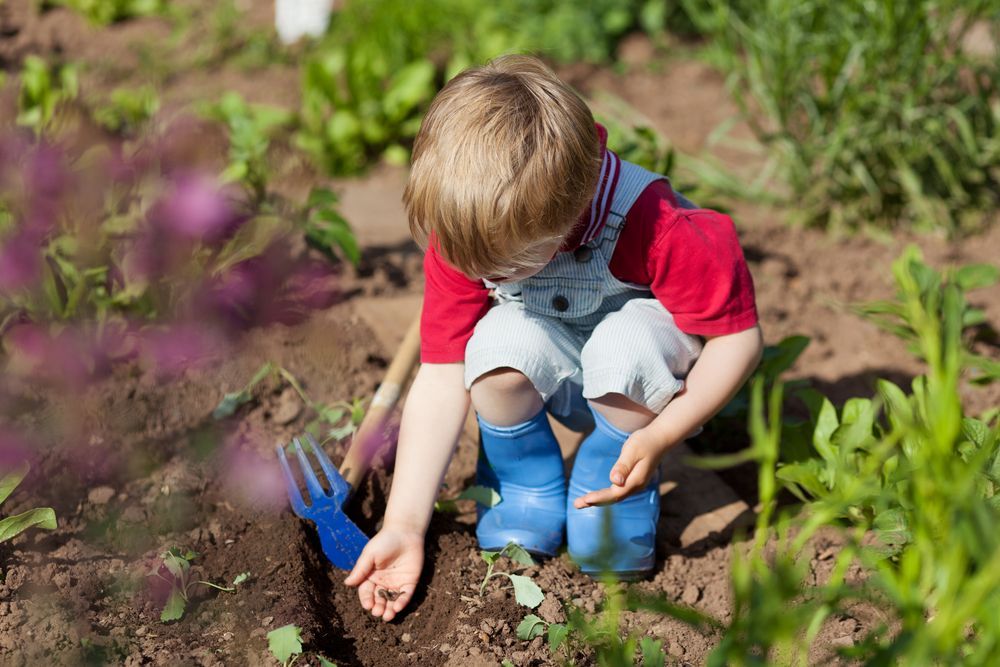
You don’t need the perfect outdoor space and amount of sun exposure to grow a successful garden. You can plant some flowers or vegetables in just a few square feet in the yard or a planter on the porch. Plant things that are easy to grow and that children will love to pick and eat.
Let your goal in gardening with your child be to provide a well-rounded experience that is enlightening and fun, as you naturally try to do in every area of your child’s preschool learning.
As Your Child Enjoys Learning By Gardening
Where better to inspire a family than the backyard garden? It’s the family’s private retreat from the bustling world. That makes it the ideal place to grow strong bonds and teach children to love nature, collaborate, and treasure the time spent there. The garden offers a unique environment for kids to learn, parents to teach, and all to have fun together.
So, cultivate an appreciation for gardening in your children. It’s an important way to inspire kids, raise more environmentally aware people, teach sound nutritional habits, and commit kids and adults to healthy outdoor time together.
For information about Montessori learning, contact the school right here on the Mansio Montessori of Geneva website. We’re here to answer all of your questions.
Forms, Policies, and Calendars | Website imagined & executed by RivalMind
